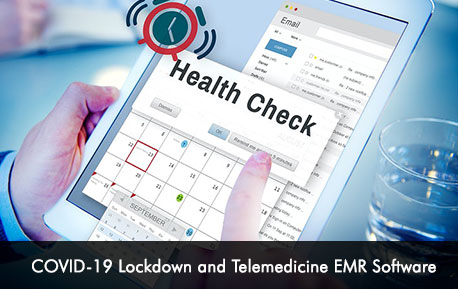Amidst the COVID-19 pandemic, telemedicine has played an important part in providing remote healthcare delivery when hospitals were overburdened and facing with insufficient hospital beds and the risk of spreading the virus due to physical contact. Telemedicine EMR software solution became the first choice of healthcare providers and patients to receive care which ultimately reduced the pressure on medical staff.
Telemedicine has become one of the fastest-growing healthcare sectors and hospitals and clinics in the US offer virtual clinic sessions to patients in order to treat and diagnose them from afar. The robust telemedicine platform has improved patient outcome levels and reduced healthcare costs drastically.
Role of telemedicine during the pandemic
Telemedicine is seen as a sustainable and an effective solution in the global pandemic. The telemedicine platform is helping to bridge the gap between clinicians and patients and providing them the opportunity to stay connected when governments were urging people to stay indoors to avoid any contact and limit exposure. Hospitals and clinics have deployed telemedicine solutions to help people with other medical conditions to receive care without having to visit the hospital facility reducing the risk of catching the virus.
Telemedicine EMR software is also being used to treat quarantined patients from their homes through convenient video sessions with the doctor. The CDC has also urged people to use telemedicine technology to link up with their healthcare providers for non-emergency cases to reduce the pressure on frontline staff members and hospitals. Telemedicine is also being used in forward triage of patients before they arrive at the hospital.
During these difficult times, patients have 24/7 connectivity with their doctors which can be a source of great comfort. It was noticed that many people were facing mental health issues such as depression and anxiety during the lockdown. Patients used the telemedicine platform to have online consultations with their mental health providers to combat underlying depression.
Telemedicine has also played a vital role in providing routine care to high-risk patients who have chronic ailments who are more vulnerable to catch the virus if they leave their homes. Through the use of quick video visits, clinicians can help such patients to avoid exposure altogether.
Limitations
The most important limitation is that some hospital systems and large clinics have embraced telemedicine solutions but most hospitals and private clinics are not equipped to deliver care through this platform. Telemedicine has never been used in response to a public crisis earlier but things are drastically changing and the US government and CDC are advising healthcare facilities to use telemedicine technology to protect both staff members and patients and reduce the burden on hospital systems.
What can be done?
Practices need to provide training to clinicians to use telemedicine tools, revise scheduling procedures, and review payer telehealth policies. Patients also need to be informed that hospital visits are being replaced by video sessions and consultations. A recent survey conducted of US patients revealed that 84% of patients are likely to go to a healthcare provider that offers telemedicine solutions. This shows that patients see this platform as an effective way to receive care remotely. The good news is most telemedicine EMR Software vendors offer training modules to help users launch and navigate the software in a breeze. Here are some examples of robust telemedicine EMR Software vendors that offer functionality, ease of use, and 24/7 support and assistance.







